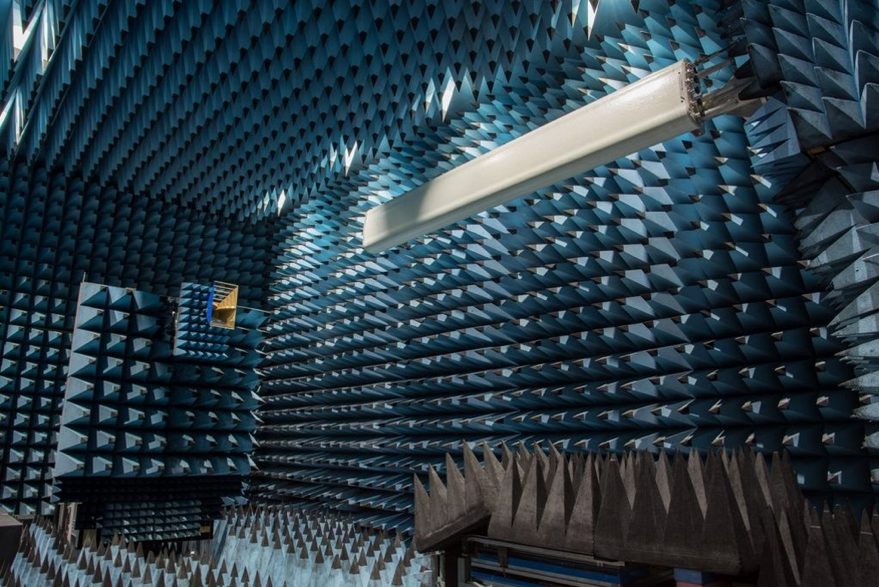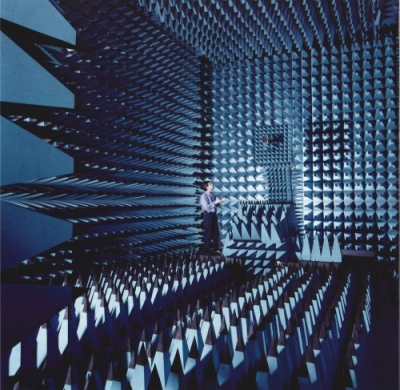Measurement and calibration
NPL has developed a range of facilities and measurement techniques for calibrating microwave standard gain horns, near-field scanning probes, reflectors and base station antennas.
The gain of standard gain horns is measured inside a temperature controlled anechoic chamber using the three antenna extrapolation technique. This involves measuring the power transmitted between the three pairs of antennas as a function of distance and then extrapolating these results to obtain the true far-field values for each antenna. The complex reflection coefficients of the antennas are also measured to correct for mismatches. An uncertainty of ± 0.05 dB is typical for most standard gain horn antennas.
For some antennas, in particular probes to be used for near-field scanning applications, it is also necessary to know the polarisation parameters, port-to-port phase, isolation and probe pattern components. The axial ratio, tilt and sense of polarisation are measured using three antenna techniques, which avoid the need for a separate polarisation standard. Nominally linearly or circularly polarised antennas can be measured.
Full characterisation of near-field scanning probes is provided, with the normalised probe receiving coefficients provided in data files consistent with the most widely used near-field scanning software.

NPL also offers a lower cost service for the calibration of wideband EMC horn antennas in a dedicated indoor anechoic test chamber. These horns, usually double ridged waveguide antennas, cover the frequency ranges 1 GHz to 18 GHz and 18 GHz to 40 GHz, however antennas operating up to 110 GHz can be measured. These antennas are typically measured at a distance of 1m or 3m, with apparent gain uncertainties of ± 0.7 dB for waveguide fed antennas and ± 0.8 dB for coaxial.
 Antenna properties measured include:
Antenna properties measured include:
- infinite range gain
- finite range gain
- antenna factor
- complex reflection coefficients
- axial ratio
- tilt angle
- sense of polarisation
- pattern components
- port-to-port phase
- port-to-port isolation
Types of antenna measured include:
- standard gain horns
- near-field scanning probes
- broadband ridged guide horns
- conical log spirals (left or right polarisation)
- array antennas
- base station antennas
Feed types accommodated include:
- even waveguide sizes from WG8 (IEC-R 22) to WG26 (IEC-R 740)
- WG11A, WG15, WG17, WG23, WG25 and WG27 (IEC-R 40, 84, 120, 400, 620, 900)
- precision type-N
- PC-7
- PC-3.5
- 2.92 mm
- 2.4 mm
- SMA (additional uncertainty may apply)
NPL also offers a consultancy service for range design and validation.
Don’t see what you are looking for? Our diverse skill set enables us to provide bespoke solutions. Please contact us to discuss your requirements.
Contact us